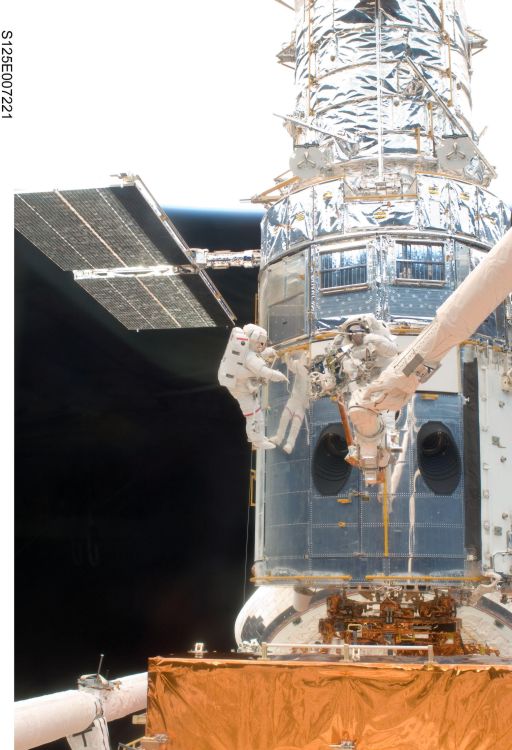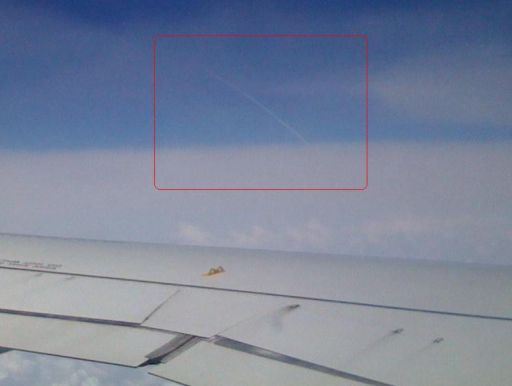Emily Lakdawalla • May 18, 2009
Hubble Spacewalks: 2 Down, 3 to Go, Never Routine
Planetary Society volunteer Ken Kremer is reporting for us from the Kennedy Space Center, where he witnessed the launch of Space Shuttle Atlantis to the Hubble Space Telescope on May 11. Kremer is a research scientist and freelance journalist who spends his spare time giving public outreach presentations on behalf of The Planetary Society as a volunteer and NASA's Jet Propulsion Laboratory as a Solar System Ambassador. He also enjoys creating Mars mosaics. Thanks Ken!
So far so good. It's 2 down and 3 to go for the crew of Atlantis
Today (May 15), Atlantis Astronauts Mike Massimino (on his 2nd Hubble flight) and Michael Good completed the 2nd of 5 planned EVA's (Extravehicular Activities) to service and upgrade the venerable 19 year old Hubble Space Telescope. On Thursday May 14, the first spacewalk (EVA 1) was conducted by astronauts John Grunsfeld (lead space walker for SM 4 on his 3rd Hubble mission) and first time flyer Andrew Feustel.
The astronauts have accomplished all their assigned objectives during the first two spacewalks. But in keeping with Hubble hugging history, the telescope threw them a few curve balls and made them work extra hard during these first two EVA's, both of which had to be extended to complete all the difficult tasks. Not even the repair operations considered to be more routine, were in fact easy but they achieved everything asked so far.

Working on Hubble
hat appears to be a number of astronauts, because of the shiny mirror-like surface of the temporarily-captured Hubble Space Telescope, is actually only two -- astronauts John Grunsfeld (left) and Andew Feustel. The mission specialists are performing the first of five STS-125 spacewalks and the first of three for this duo.
All three RSU boxes holding the six gyroscopes were replaced. But one of the new state of the art units could not be seated properly into place and caused the astronauts to fall nearly 90 minutes behind schedule. As a result, the spacewalkers were instructed by NASA to install a refurbished spare unit brought along on Atlantis as back up just in case. The space unit is comprised of refurbished parts rebuilt from earlier units removed from Hubble on the 1999 servicing mission and will not hinder operations NASA says.
For most of its lifetime Hubble was operating on 3 of the 6 gyroscopes with the others held in reserve for redundancy. But more recently, Hubble was switched to a 2 gyro mode to conserve the remaining gyros as long as possible after 3 of the gyros failed and a fourth is exhibiting anomalous behavior. This plan was devised in hopes of maximizing Hubble's lifetime.
The spacewalkers also replaced a new battery module from the telescope's Bay 2 which is about 36 x 36 x 10 inches in size and weighs about 475 pounds. These are the original batteries launched with Hubble in 1990 and have not been replaced. A second battery module will be replaced on an upcoming EVA. The batteries are far beyond their original design lifetime and are operating at half their capacity. During my chat with Ed Weiler he told me, "They have functioned well but we felt it wise to replace them on this last mission. Given their longevity it's unlikely they will be the cause of Hubble's ultimate doom."
Replacing the gyroscopes and batteries is the top priority of the mission and absolutely essential for the continued operation and extending the lifetime of Hubble.
During the first spacewalk which lasted 7 hours and 20 minutes, Astronauts John Grunsfeld and Andrew Feustel successfully installed the powerful new Wide Field Camera 3 and removed the 15 year old Wide Field and Planetary Camera 2 (WFPC2). The WFC3 camera cost $132 million. The Wide Field and Planetary Camera 2 may be placed on special exhibit at the National Air and Space Museum according to Ed Weiler.
The astronauts encountered great difficulty in removing a critical bolt holding the instrument in place which could have completely prevented the removal of WFPC2. After numerous tries with his custom designed toolkit, Astronaut Feustel eventually used elbow grease on his socket in a dramatic last ditch effort to unlatch the bolt and save the day. The remaining work to swap the cameras proceeded perfectly.
Grunsfeld and Feustel also replaced the crucial Science Instrument Command and Data Handling Unit (SCI&DH) with a ground spare. Hubble cannot operate without the SCI&DH and allows Hubble's science instruments to send and receive data.
"We're a long way already to greatly extending the longevity of the Hubble observatory," said Hubble's senior project scientist Dave Leckrone from NASA's Goddard Space Flight Center.
Today I participated in a media tour of NASA's soon to launch Lunar Reconnaisaence Orbiter (LRO) which I'll report on soon. In a few days I'll be presenting lectures here in Florida on NASA's solar system exploration missions, one of which will be attended by the parents of one of the astronauts.

Atlantis Seen from a Plane
tlantis punches through the cloud layers on May 11. As I observed Atlantis launch from the KSC press center, my brother coincidentally observed Atlantis accelerating to orbit from above while sitting inside a United Airlines jetliner landing at Orlando Airport and snapped this photo from an IPhone.
Support our core enterprises
Your support powers our mission to explore worlds, find life, and defend Earth. You make all the difference when you make a gift. Give today!
Donate

 Explore Worlds
Explore Worlds Find Life
Find Life Defend Earth
Defend Earth

